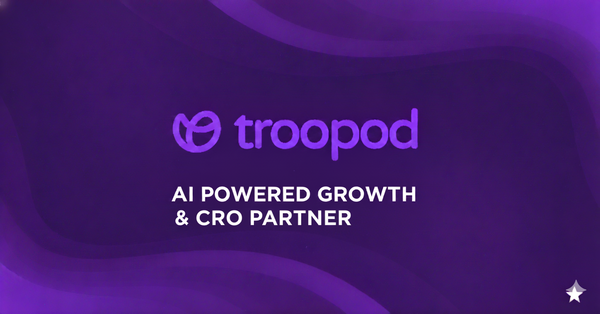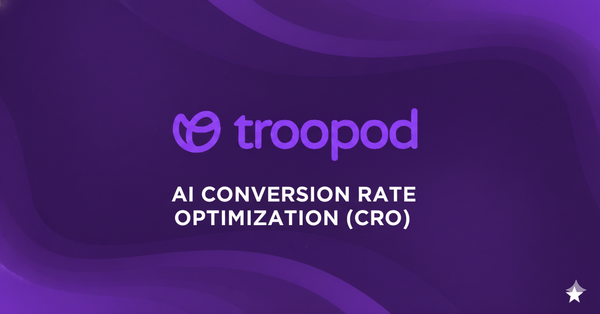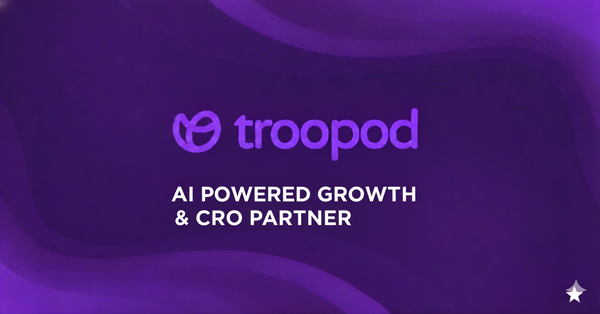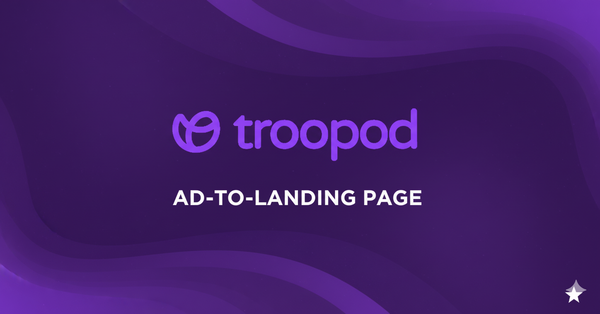Ad to Landing Page Alignment: The 3-Step Framework That Fixes Your Conversion Leak
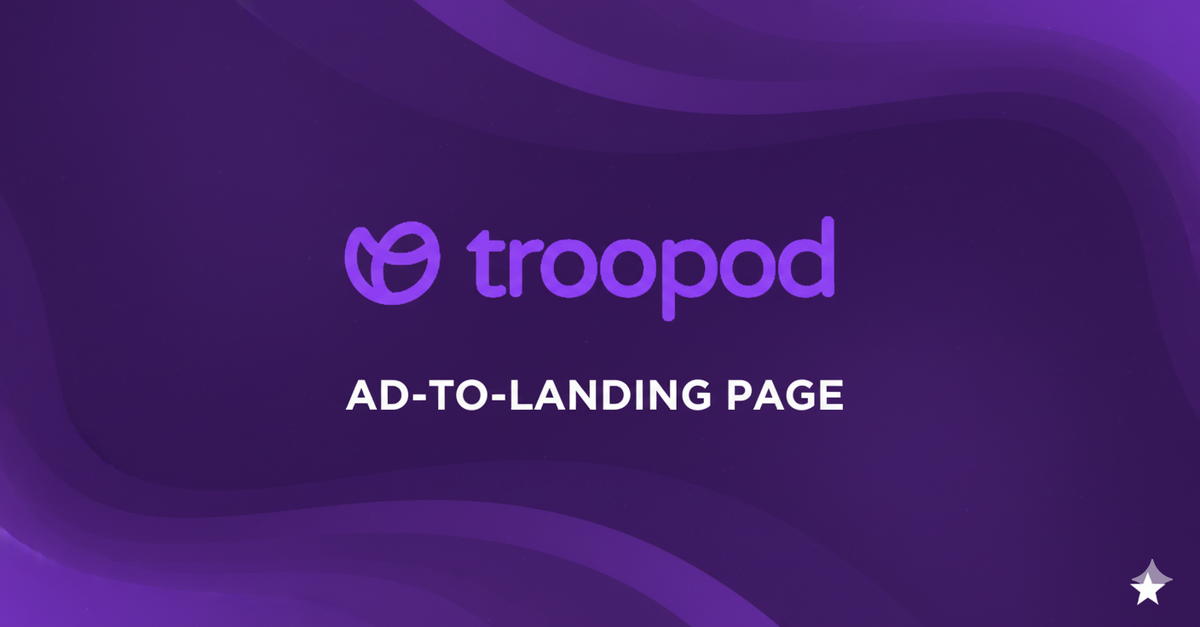
The ₹8.2 Lakh Problem You're Not Tracking
A D2C brand spends ₹12 lakhs monthly on Meta ads. Their CTR is strong at 3.2%. Cost per click is reasonable at ₹18. Traffic is flowing.
But conversion rate sits at 1.8%.
They blame the product. They blame the price. They blame the checkout flow.
Nobody blames the actual problem: the ad promised one thing, the landing page delivered something else.
This isn't a conversion problem. It's an alignment problem.
And it's costing them ₹8.2 lakhs monthly in lost revenue.
Why Most Brands Get Ad-to-Page Alignment Wrong
Here's the typical setup:
You run 50 ads. Each one targets a different audience with a different hook:
- "Premium quality materials"
- "Fast delivery in 24 hours"
- "Affordable luxury for everyone"
- "Eco-friendly sustainable products"
All 50 ads send traffic to the same homepage.
That homepage was "optimized" through traditional CRO. Headlines tested. CTAs refined. Layout improved. Conversion rate went from 1.5% to 1.8%.
Your team celebrated.
But here's what actually happened:
Someone clicked the "Fast delivery in 24 hours" ad expecting speed. They landed on a homepage talking about premium quality. Confused, they bounced.
Someone else clicked "Affordable luxury" expecting value pricing. They landed on the same page emphasizing premium materials. No pricing visible. They left.
Your "optimized" homepage converts at 1.8% because it's optimized for nobody. It's the average of 50 different expectations, which means it's wrong for everyone.
The 3-Step Framework: Hook → Context → Conversion Consistency
Ad-to-page alignment isn't complicated. It's three steps.
Step 1: Hook Alignment
The Hook is what stopped them from scrolling.
In your ad, you made a promise. You used specific language. You emphasized a particular benefit.
Your landing page needs to immediately echo that exact hook in the first 3 seconds.
Bad Example:
Ad hook: "Get salon-quality hair in 8 weeks with our keratin treatment"
Landing page headline: "Welcome to Premium Hair Care"
What the visitor thinks: "Did I click the wrong ad?"
Good Example:
Ad hook: "Get salon-quality hair in 8 weeks with our keratin treatment"
Landing page headline: "Salon-Quality Hair in 8 Weeks: The Keratin Treatment That Actually Works"
What the visitor thinks: "Yes, this is exactly what I clicked for."
Hook Alignment Checklist:
- Does the landing page headline contain the exact benefit from the ad?
- Is the hero image visually consistent with the ad creative?
- Does the first sentence reinforce the same promise?
- Would someone know they're in the right place within 3 seconds?
Real example from Obagi Medical:
Ad (Mary Lawless Lee): "Fuller, thicker brows in 8 weeks—just 20 seconds, twice a day with BrowGel Serum"
Original landing page: Generic Elastiderm collection page. No mention of brows. No BrowGel featured.
Hook alignment gap: 100%. The promise completely disappeared.
Impact: Visitors bounced because the page didn't match what they clicked for.
Step 2: Context Alignment
Context is why they care about your hook.
Different people click the same product for different reasons.
Someone buying a multivitamin might be:
- A busy professional seeking more energy
- A fitness enthusiast optimizing performance
- A parent wanting better immune health
- Someone over 40 concerned about aging
Your ad targeted one of these contexts. Your landing page needs to maintain that context throughout.
Bad Example:
Ad context: "Too tired to keep up with your kids? Our multivitamin gives busy parents natural energy all day."
Landing page context: Generic list of vitamins and minerals with technical ingredient names. No mention of parenting, energy, or keeping up with kids.
What happens: They don't see themselves in the page. They leave.
Good Example:
Ad context: "Too tired to keep up with your kids? Our multivitamin gives busy parents natural energy all day."
Landing page context:
- Headline: "Finally keep up with your kids—natural energy for busy parents"
- Hero image: Parent playing actively with children
- Benefits: "No more 3pm crashes," "Energy from morning dropoff to bedtime"
- Testimonials: Parents talking about having energy for their kids
What happens: They see themselves in every section. Trust builds. They convert.
Context Alignment Checklist:
- Does the landing page speak to the same life situation as the ad?
- Are testimonials/reviews from people in the same context?
- Do images reflect the same use case?
- Is the problem framed the same way?
Real example from Beauty Pie:
Ad 1 context: "Fake eight hours of sleep with our under-eye duo"
Ad 2 context: "Undone effect lip color—elegant without trying"
Original landing page: Generic beauty product grid. No sleep/tired messaging. No "undone" positioning.
Context alignment gap: The emotional drivers (looking well-rested, effortless elegance) were missing.
Step 3: Conversion Consistency
Conversion Consistency is removing every tiny friction that breaks the flow.
You got them to click. Your hook matched. Your context resonated. Now they're ready to buy.
Don't lose them in the final meters because of misaligned CTAs, missing information, or confusing next steps.
Common Conversion Inconsistencies:
Inconsistent CTAs:
- Ad: "Shop the BrowGel Serum"
- Landing page CTA: "Explore Our Collection"
What happens: Cognitive load increases. They have to think. Thinking kills conversions.
Fixed:
- Ad: "Shop the BrowGel Serum"
- Landing page CTA: "Get BrowGel Serum"
Missing expected information:
- Ad mentions: "Free shipping"
- Landing page: No mention of shipping anywhere
What happens: Doubt creeps in. "Wait, was that a different product?"
Fixed: Prominently display "Free Shipping" near the CTA.
Pricing surprises:
- Ad implies affordability
- Landing page shows no pricing until checkout
What happens: They feel baited. They leave.
Fixed: Show pricing clearly if the ad set that expectation.
Conversion Consistency Checklist:
- Does the CTA button copy align with the ad's call to action?
- Is the specific product from the ad easy to find and purchase?
- Are all promises from the ad visible on the page (free shipping, guarantees, etc.)?
- Is the pricing expectation consistent?
- Can they complete the action the ad suggested without extra steps?
How to Implement the Framework
The Manual Way (Why It Doesn't Scale)
You could manually create landing pages for each ad:
- Review each ad's hook, context, and CTA
- Design a custom landing page matching each
- Write custom copy for each variation
- Build and QA each page
- Update whenever ads change
Timeline: 8-12 weeks for 20 landing pages
Cost: ₹8-15 lakhs
Maintenance: Ongoing nightmare as ads rotate
The AI Way (How It Actually Scales)
AI reads your ad copy, analyzes your landing page, and generates a personalized version that aligns hook, context, and conversion elements automatically.
Timeline: 2 minutes per ad
Cost: Fraction of manual approach
Maintenance: Automatic when ads change
Pune fashion brand example:
Before (generic homepage for all ads):
- Instagram mobile visitors (new): 1.8% conversion
- Google desktop visitors (returning): 1.8% conversion
- Tier 2 mobile visitors (first-time): 1.8% conversion
After (AI-aligned pages per ad context):
- Instagram mobile (new): 3.4% (+89%)
- Google desktop (returning): 8.2% (+356%)
- Tier 2 mobile (first-time): 2.7% (+50%)
What changed: Each visitor got a page aligned with their ad's hook and context.
The Framework in Action: Real Before/After
Skincare Brand Running "Anti-Aging" Campaign
Original Setup:
- Ad hook: "Reduce wrinkles in 30 days with retinol serum"
- Landing page: Generic skincare homepage
- Headline: "Premium Skincare Solutions"
- Hero: Generic model, no age focus
- Benefits: List of ingredients
- CTA: "Shop Now"
- Conversion: 1.9%
Framework Applied:
Step 1 - Hook Alignment:
- New headline: "Reduce Wrinkles in 30 Days: The Retinol Serum Dermatologists Trust"
- Hero image: Before/after of visible wrinkle reduction
- First sentence: "See visible wrinkle reduction in just 30 days"
Step 2 - Context Alignment:
- Benefits reframed: "Look 10 years younger," "Smooth fine lines while you sleep"
- Testimonials: Women 40+ talking about wrinkle reduction
- Images: Real women showing age-related concerns and results
Step 3 - Conversion Consistency:
- CTA: "Get Retinol Serum" (matches ad language)
- 30-day guarantee highlighted (reinforces low-risk trial)
- Pricing visible (expected from value-focused ad)
New conversion: 4.2% (+121%)
Why it worked: Every element aligned with the promise that made them click.
Common Mistakes That Break Alignment
Mistake #1: Over-Optimization for "Average"
Traditional A/B testing optimizes for the average visitor. But the average visitor doesn't exist.
You test headline A vs B across all traffic. B wins with 2.5% conversion vs A's 2.3%.
But when you segment:
- First-time visitors: A converted at 3.1%, B at 1.9%
- Returning visitors: A converted at 1.8%, B at 4.2%
Declaring B the winner hurts first-time visitors. But that's what traditional CRO does.
Solution: Align pages to visitor context, not averages.
Mistake #2: Beautiful Design, Wrong Message
A landing page can be gorgeously designed, professionally shot, perfectly laid out—and still convert poorly if it doesn't match the ad.
Design doesn't fix misalignment. It just makes the wrong message prettier.
Mistake #3: Technical Benefits Instead of Emotional Outcomes
Ad promises emotional outcome: "Feel energized all day"
Landing page delivers technical specs: "Contains 100mg caffeine, B12, and adaptogens"
The disconnect: They don't care about ingredients. They care about feeling energized.
Fix: Lead with outcomes, support with ingredients.
Mistake #4: Buried Proof Points
Your ad promised "clinically tested." Your landing page mentions it in fine print at the bottom.
Only 5-10% of visitors scroll to the bottom.
Fix: If the ad emphasized it, the landing page must highlight it above the fold.
Mistake #5: Generic Trust Signals
Ad targets tier 2 cities emphasizing COD and vernacular content.
Landing page shows: International models, credit card focus, English-only content.
The disconnect: They don't see themselves. Trust doesn't build.
Fix: Match trust signals to the audience context.
Measuring Alignment Success
Don't just track overall conversion rate. Track these:
Bounce rate by ad source:
- High bounce from specific ads = alignment problem
- That ad's hook doesn't match the page
Time to conversion by ad:
- Fast conversions = strong alignment
- Long consideration time = messaging disconnect
Scroll depth by ad source:
- Deep scrolling despite no conversion = they're looking for the promise
- Shallow scrolling + bounce = immediate disconnect
Cart abandonment by ad:
- High abandonment = conversion inconsistency
- Something promised wasn't delivered
The Bottom Line
Ad-to-page alignment isn't about making your landing page "better."
It's about making your landing page match what the ad promised.
Hook → Context → Conversion Consistency.
Three steps. Every time.
Traditional CRO optimizes one page for everyone. That's the wrong game.
The right game: Personalize the page for each ad's promise.
Your visitors aren't confused. Your page is confusing them.
Fix the alignment. Watch conversions climb.
Ready to fix your ad-to-page alignment? Troopod analyzes your ads and landing pages, then generates personalized versions that align hook, context, and conversion elements automatically. See where your disconnect is in under two minutes.


